Mount Pumori (7145 m)
Mount Pumori, standing at an impressive 7,145 meters (23,443 feet), is one of the most popular 7000-meter peaks in the Himalayas, located in the Khumbu region of Nepal, near the Tibetan border. Often referred to as "Everest's Daughter" because of its proximity to the world's highest mountain, Mount Everest, Pumori offers a stunningly scenic yet challenging climb, making it a favorite among experienced climbers.
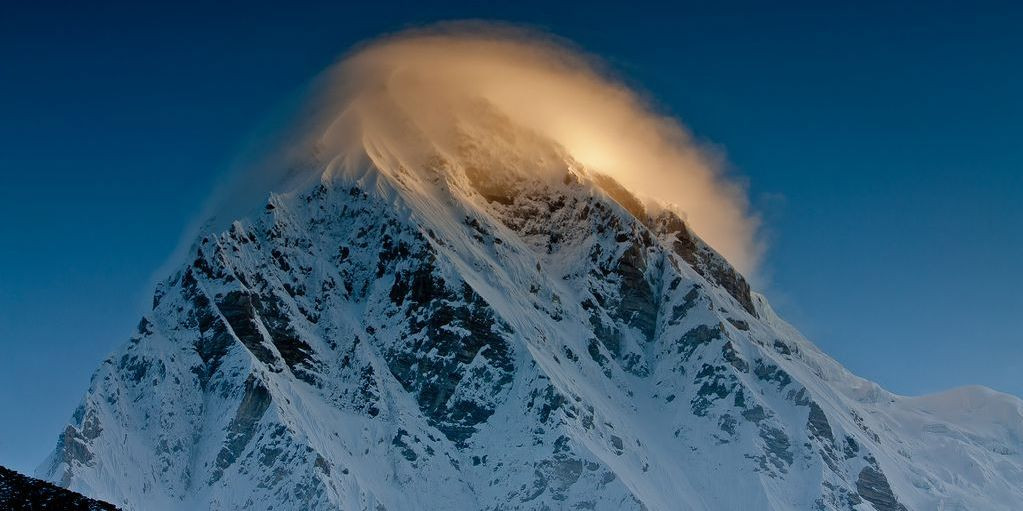 .
.
-
Climbing Features: Mount Pumori is known for its aesthetic beauty and relatively straightforward ascent, though it is not without its challenges. The climb involves technical sections, particularly in the final parts, requiring climbers to have solid skills in ice and rock climbing. The standard route for ascending Pumori is the Southeast Ridge, which provides a mixture of ice and rock climbing. The most significant challenge often comes from the sheer steepness and exposure of certain sections, as well as the risk of avalanches in certain areas.
-
Expedition Experience: Climbing Mount Pumori provides a substantial altitude experience without the extreme difficulty of the higher 8000-meter peaks. The expedition typically lasts about three to four weeks, including acclimatization, allowing climbers to adapt to the high altitude. The journey to Pumori usually starts with a flight from Kathmandu to Lukla, followed by a trek through the famous Khumbu Valley, passing through Sherpa villages and monasteries, which adds a rich cultural experience to the climb.
-
Acclimatization and Safety: Proper acclimatization is crucial on Pumori as with any high-altitude climbing. Expeditions are carefully planned with scheduled rest days and shorter climbs to higher altitudes followed by returns to lower altitudes to sleep. Safety is paramount, and climbers are equipped with the necessary gear and supported by experienced guides and porters provided by expedition companies like Relax Getaways.
-
Environmental Considerations: Climbers are encouraged to follow Leave No Trace principles to minimize their environmental impact. This includes managing waste properly, respecting wildlife, and being considerate of other climbers and local communities.
-
Why Choose Relax Getaways for Mount Pumori: Choosing a reputable company like Relax Getaways for a Mount Pumori expedition means benefiting from expert knowledge, logistical support, and safety management. We provide experienced guides who are familiar with the mountain's unique conditions and challenges. We also ensure that all clients are fully briefed on safety, route details, and environmental considerations to promote a successful and responsible climbing experience.
Mount Pumori offers a remarkable climbing experience for those looking to test their skills at high altitudes while enjoying some of the most breathtaking landscapes in the Himalayas.
Mount Putha Hiunchuli (7246 m)
Mount Putha Hiunchuli, rising to an elevation of 7,246 meters (23,773 feet), is one of the less crowded and relatively accessible 7000-meter peaks located in the western part of Nepal, within the Dhaulagiri range. This mountain is considered one of the easier 7000-meter peaks to climb due to its less technical terrain, making it an excellent choice for climbers looking to venture into high-altitude expeditions without the extreme technical challenges.
-
Climbing Features: Mount Putha Hiunchuli's standard route is via the North-West Ridge, which offers a straightforward ascent with few technical sections. The climb generally involves basic snow and ice climbing, with some sections requiring fixed ropes. Despite its reputation as an easier climb, the altitude itself presents significant challenges, and the weather can be unpredictable, adding to the difficulty.
-
Expedition Experience: An expedition to Mount Putha Hiunchuli typically spans about four weeks. The journey begins with a flight from Kathmandu to Nepalgunj, followed by another flight to Juphal, from where the trekking starts. The trek to the base camp passes through beautiful, remote landscapes of the Dolpo region, known for its rugged terrain and the unique culture of its inhabitants, providing a culturally enriching experience.
-
Acclimatization and Safety: Climbers are advised to undertake a methodical acclimatization process, which includes several days of trekking through varying altitudes before reaching the base camp. Safety is enhanced by the relatively gentle slopes of Putha Hiunchuli, although vigilance is necessary for sudden weather changes and potential avalanche risks in certain sections.
-
Environmental Considerations: The Dolpo region, being remote and ecologically sensitive, requires climbers to be especially mindful of their environmental impact. Efforts to carry out waste, use sustainable resources, and respect the natural habitat are essential for preserving the pristine conditions of the area.
-
Why Choose Relax Getaways for Mount Putha Hiunchuli: Relax Getaways provides well-organized expeditions to Mount Putha Hiunchuli, equipped with experienced guides who are intimately familiar with the region's geography and culture. Our services include comprehensive logistical support, from transportation and permits to guided acclimatization and high-altitude safety protocols. We ensure that climbers have a supportive and enjoyable experience while maintaining a high standard of safety and environmental stewardship.
Mount Putha Hiunchuli offers a unique opportunity for climbers to experience the thrill of high-altitude mountaineering in one of Nepal’s most beautiful and remote regions. With its less technical ascent and the stunning natural beauty of the Dolpo region, this peak is ideal for those looking to broaden their mountaineering experience in the Himalayas.
Mount Churen (7371 m)
Mount Churen, with an elevation of 7,371 meters (24,183 feet), stands as a majestic peak in the Dhaulagiri range in western Nepal. It is one of the less explored 7000-meter peaks, offering a secluded and pristine climbing environment. This isolation makes it an attractive option for climbers seeking a more solitary and undisturbed high-altitude experience.
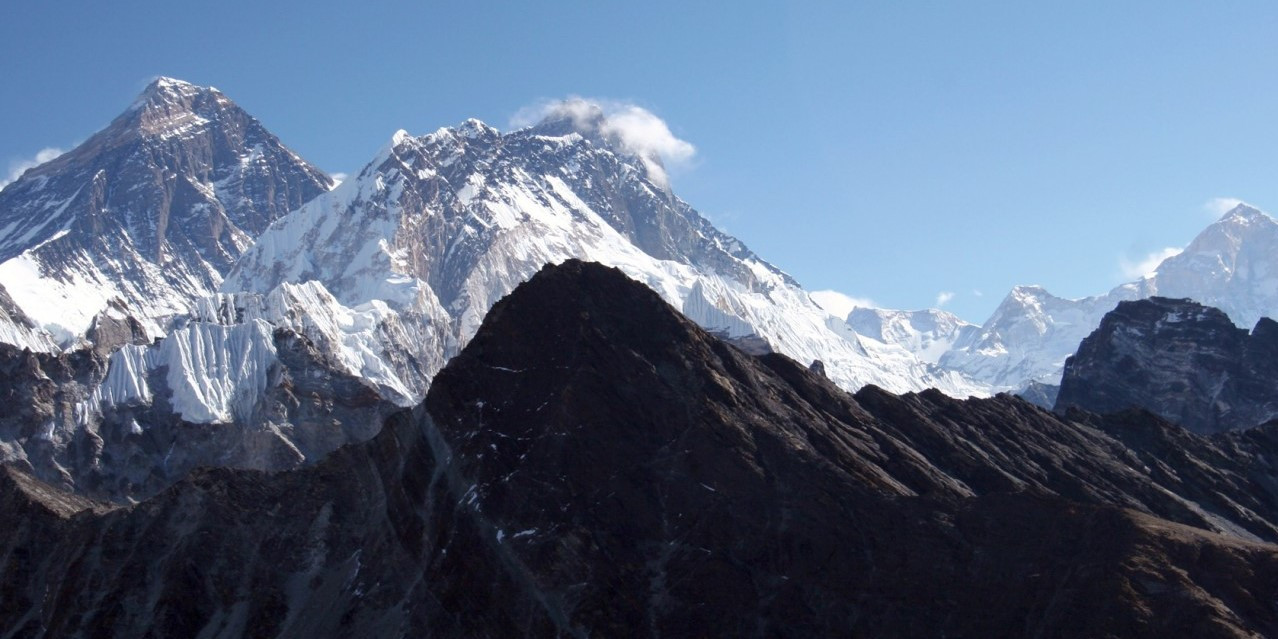
-
Climbing Features: The climbing route on Mount Churen is considered technically challenging, involving steep ice and snow slopes, and requires advanced mountaineering skills. The most common route is the North Face, which presents various technical sections that demand proficiency in ice climbing and navigating crevasses. The mountain's remote location adds to the logistical challenges, making it essential for climbers to be well-prepared and self-sufficient.
-
Expedition Experience: An expedition to Mount Churen typically lasts about four to five weeks. The journey begins with a flight or drive from Kathmandu to Pokhara, followed by a drive to Beni and further to Darbang, where the trekking starts. The approach to the base camp involves several days of trekking through remote villages and untouched landscapes, providing a unique cultural experience and interaction with local communities.
-
Acclimatization and Safety: Effective acclimatization is crucial, given Churen’s high altitude and technical demands. The expedition plan includes several days dedicated to acclimatization hikes and rest, ensuring climbers are well-adapted to the altitude. Safety measures are paramount, with experienced guides leading the climb and using fixed ropes in necessary sections to enhance security.
-
Environmental Considerations: Due to its remote location and fewer climbing attempts, Mount Churen is relatively undisturbed by human activity. Climbers are encouraged to maintain this by adhering to Leave No Trace principles, managing waste responsibly, and minimizing their environmental footprint.
-
Why Choose Relax Getaways for Mount Churen: Choosing Relax Getaways for your Mount Churen expedition means opting for a company that values safety, environmental responsibility, and authentic climbing experiences. We provide seasoned high-altitude guides, comprehensive logistical support, and a deep commitment to ensuring the well-being of both our clients and the natural environment. Our tailored expeditions cater to the needs and skills of our climbers, emphasizing a personalized approach to tackling one of the Himalayas' hidden gems.
Mount Churen offers an exceptional adventure for experienced climbers looking to engage with the raw and unspoiled beauty of the Himalayas, away from the more crowded routes. Its technical challenges and remote location make it a rewarding choice for those who wish to test their mountaineering prowess in a truly serene setting.
Mount Tilicho (7134 m)
Mount Tilicho, standing at 7,134 meters (23,406 feet), is one of the captivating 7000-meter peaks nestled in the Annapurna region of Nepal. Renowned not only for its challenging climbs but also for its proximity to the world’s highest lake, Tilicho Lake, this mountain offers climbers a unique blend of natural beauty and adventure.
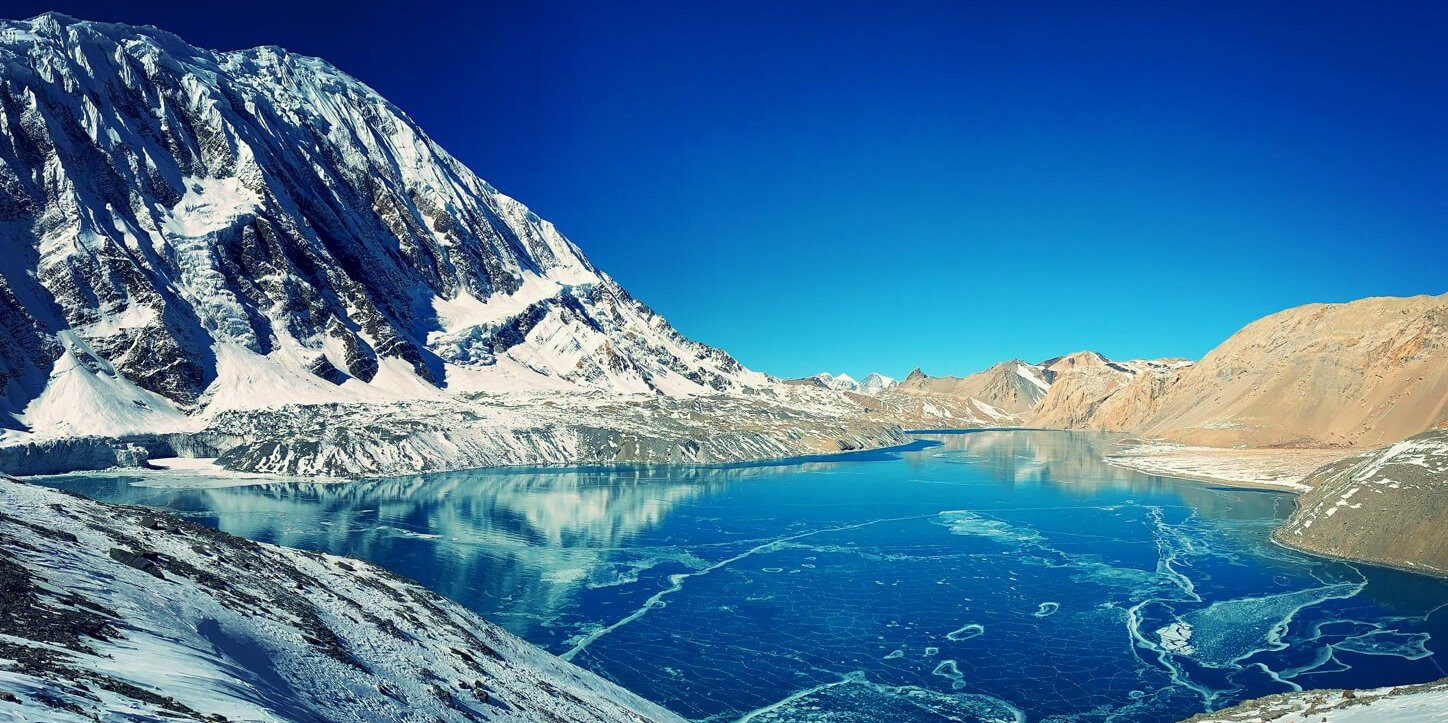
-
Climbing Features: Mount Tilicho is known for its technical difficulty, requiring climbers to have advanced mountaineering skills. The most common route, the Northwest Shoulder, involves steep ice and rock sections, making the use of fixed ropes and other technical equipment essential. The terrain is varied and challenging, encompassing everything from glacier travel to navigating sharp ridges and crevasses.
-
Expedition Experience: The expedition to Mount Tilicho typically spans around four weeks. It starts with a drive from Kathmandu to Besishahar, followed by a trek through the beautiful Marsyangdi Valley. This approach not only aids in acclimatization but also allows climbers to immerse themselves in the rich cultural tapestry of the local communities living in the Annapurna region. The final ascent offers breathtaking views of the Annapurna massif and Dhaulagiri, enhancing the climbing experience with spectacular panoramic vistas.
-
Acclimatization and Safety: Acclimatization is a critical component of the Mount Tilicho expedition, with several rest days and shorter climbs incorporated into the itinerary to ensure climbers adjust to the high altitude. Safety is rigorously managed through the expertise of seasoned guides, who ensure that all climbing protocols, especially concerning weather conditions and technical challenges, are strictly followed.
-
Environmental Considerations: Climbers are encouraged to respect the pristine natural environment around Mount Tilicho, which is part of the larger Annapurna Conservation Area. This includes adhering to sustainable practices such as waste management, minimizing the use of plastic, and ensuring that all campsites are left as they were found to preserve the ecological integrity of the region.
-
Why Choose Relax Getaways for Mount Tilicho: Relax Getaways is committed to providing a safe, memorable, and environmentally responsible climbing experience on Mount Tilicho. Our guides are not only experts in high-altitude climbing but also deeply knowledgeable about the local culture and environmental conditions. We provide comprehensive support, from logistical planning and route setting to emergency response and rescue operations, ensuring that every aspect of the expedition is managed with the utmost care and professionalism.
Mount Tilicho is an ideal choice for experienced climbers seeking a less trodden yet equally exhilarating climb in the Himalayas. Its remote trails and challenging ascents offer an authentic and thrilling mountaineering adventure. With Relax Getaways, climbers can achieve their high-altitude climbing goals while enjoying the beauty and solitude of one of Nepal’s most stunning regions.
Mount Climbing Lhakpa Ri (7045 m)
Mount Lhakpa Ri, standing at 7,045 meters (23,113 feet), is an enticing peak located near the Tibet-Nepal border, just to the north of Mount Everest. Often referred to as one of the easier 7000-meter peaks, Lhakpa Ri offers a unique blend of trekking and mountaineering, making it an excellent choice for climbers looking to experience high-altitude climbing without the extreme technical challenges of taller peaks.
-
Climbing Features: Lhakpa Ri is known for its relatively accessible route, which combines elements of a trek with straightforward mountaineering. The standard approach via the north route involves crossing the famous Rongbuk Glacier and ascending gentle snow slopes. This makes it an ideal introduction to Himalayan mountaineering for climbers with some previous trekking and basic mountaineering experience. Despite its lower technical requirements, climbers still need to be well-prepared for the thin air and cold temperatures typical of such altitudes.
-
Expedition Experience: The expedition to Lhakpa Ri usually takes about three weeks. The journey begins with an overland trip from Kathmandu to Tibet, crossing some of the most stunning high-altitude landscapes in the world. The approach to the base camp is an adventure in itself, offering climbers the opportunity to acclimatize while soaking in the rich cultural heritage of Tibetan Buddhism and the breathtaking scenery of the Tibetan Plateau.
-
Acclimatization and Safety: Acclimatization is carefully planned, with several days spent at various camps along the route to allow climbers to adapt to the altitude gradually. The climb itself is generally considered safe, with fewer objective dangers such as crevasses or seracs compared to other high-altitude peaks. However, the altitude can still pose significant risks, and it is crucial to monitor health conditions closely throughout the climb.
-
Environmental Considerations: The environment around Lhakpa Ri is pristine and largely untouched by human activity. Climbers are encouraged to maintain this by practicing Leave No Trace principles, managing waste effectively, and minimizing their impact on the fragile high-altitude ecosystem.
-
Why Choose Relax Getaways for Mount Lhakpa Ri: Relax Getaways specializes in providing a comprehensive and enriching climbing experience on Mount Lhakpa Ri. Our experienced guides are well-versed in the unique challenges and beauty of the region, ensuring that climbers not only reach the summit safely but also gain a deeper appreciation for the natural and cultural environments they traverse. We handle all logistical aspects of the expedition, including permits, transportation, and camp setup, allowing climbers to focus on the journey and their climbing objectives.
Mount Lhakpa Ri is an excellent choice for those looking to step into the world of high-altitude expeditions. It offers a perfect combination of moderate climbing challenges and the awe-inspiring vistas of the Himalayas, making it a memorable and achievable goal for many mountaineers. With Relax Getaways, you can be assured of a well-organized, safe, and environmentally responsible climbing adventure.
Ganesh Himal (7429 m)
Ganesh Himal, reaching an elevation of 7,429 meters (24,377 feet), is one of the lesser-known but equally stunning 7000-meter peaks located in central Nepal, near the popular Langtang region. Named after the Hindu deity Ganesh, this mountain is characterized by its rugged terrain and striking natural beauty, offering a more secluded climbing experience away from the more frequented routes of Everest and Annapurna.
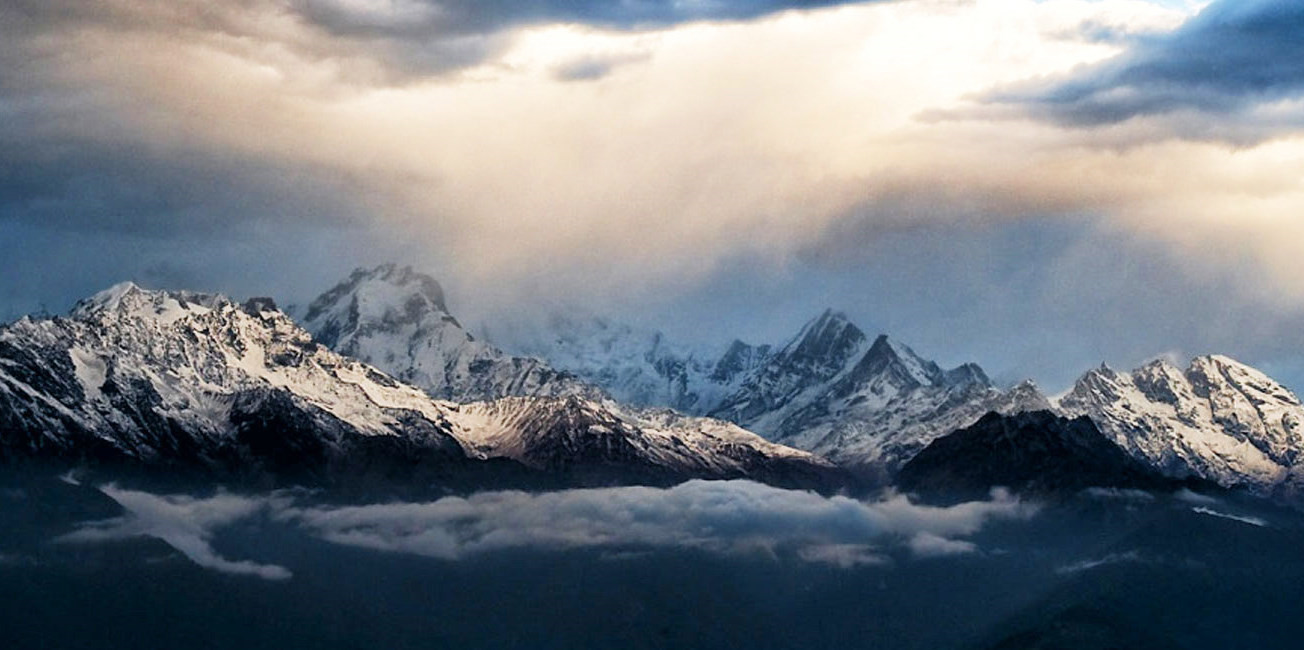
-
Climbing Features: Ganesh Himal presents a series of technical challenges that require advanced mountaineering skills, including steep ice and rock climbing. The mountain's complex topology, featuring sharp ridges and high cols, demands a high level of physical fitness and technical proficiency. The most commonly attempted route is via its northwest ridge, which is known for its scenic yet demanding ascent.
-
Expedition Experience: An expedition to Ganesh Himal typically lasts about four to five weeks. The journey begins with a drive from Kathmandu to the trek starting point, often Dhading or Syabrubesi, followed by a trek through culturally rich Tamang villages. This trek not only helps climbers acclimatize but also allows them to experience the vibrant local culture and pristine landscapes that are characteristic of central Nepal.
-
Acclimatization and Safety: Proper acclimatization is a critical component of a successful Ganesh Himal expedition. The itinerary usually includes multiple rest days and shorter hikes to higher altitudes to prepare for the summit push. Safety is emphasized with the use of fixed ropes on more technical sections and constant monitoring of weather conditions to avoid common hazards such as avalanches and sudden storms.
-
Environmental Considerations: Given its remote location and the sensitivity of its ecosystem, climbers are urged to adhere to environmentally friendly practices. This includes carrying out all trash, using biodegradable materials whenever possible, and minimizing the use of firewood to conserve the forest resources of the area.
-
Why Choose Relax Getaways for Ganesh Himal: Relax Getaways offers expertly guided climbs of Ganesh Himal, providing climbers with comprehensive logistical support, experienced climbing guides, and all necessary climbing permits. Our focus on safety, environmental responsibility, and cultural respect ensures that climbers have a fulfilling and sustainable adventure. We are committed to delivering an expedition that not only meets the high standards of seasoned mountaineers but also preserves the natural and cultural integrity of the Himalayan region.
Climbing Ganesh Himal with Relax Getaways offers a unique opportunity to explore one of Nepal’s hidden gems. This peak provides a challenging yet rewarding experience for experienced climbers looking to venture off the beaten path and immerse themselves in the untouched beauty and solitude of the Himalayas.
Himlung Himal (7126 m)
Himlung Himal, standing at 7,126 meters (23,379 feet), is situated in the remote corners of the Nepali Himalayas, near the border with Tibet. This mountain has been gaining popularity among climbers due to its relatively accessible approach and lesser technical requirements, making it an excellent option for those looking to experience their first 7000-meter peak or to prepare for higher and more challenging expeditions.
-
Climbing Features: The standard route to summit Himlung Himal involves climbing through a combination of steep snow slopes and moderate ice sections, which are manageable with basic alpine climbing skills. The approach route generally follows the northeast face and ridge, offering a steady ascent that allows climbers to gradually acclimatize to the high altitude without overwhelming technical challenges.
-
Expedition Experience: The expedition to Himlung Himal usually spans about four weeks. The journey begins with a scenic drive from Kathmandu to Koto, passing through the lush landscapes of the Annapurna Conservation Area. From Koto, climbers trek through remote villages, enjoying unique insights into the cultures of the region, particularly the Tibetan-influenced communities. This trek not only serves as an acclimatization phase but also enriches the climbing experience with its cultural depth.
-
Acclimatization and Safety: A well-planned acclimatization schedule is critical for a successful climb, involving multiple staged ascents and rest days. The route and camps are established in a manner that maximizes safety and allows for flexible adjustments based on the climbers' acclimatization rates and weather conditions. Safety measures include the use of fixed ropes on steeper sections and regular weather checks to ensure climbers are not caught off-guard by sudden changes.
-
Environmental Considerations: Climbers are encouraged to follow eco-friendly practices to preserve the pristine environment of the Himlung Himal region. This includes proper disposal of waste, use of clean energy sources when possible, and minimal alteration of the natural surroundings. The area is less trafficked compared to other Himalayan regions, so maintaining its cleanliness and ecological balance is particularly important.
-
Why Choose Relax Getaways for Himlung Himal: Relax Getaways specializes in expeditions to less crowded and more ecologically sensitive areas like Himlung Himal. We provide experienced guides who are familiar with the region’s terrain and culture, comprehensive logistical support from Kathmandu to the summit, and a commitment to safety and environmental sustainability. Our tailored approach ensures that climbers not only reach their summit goals but do so in a way that respects the local community and environment.
Himlung Himal offers a unique climbing experience that combines adventure with cultural immersion, set against the backdrop of some of the most breathtaking landscapes in the Himalayas. With Relax Getaways, climbers can look forward to a well-organized, safe, and environmentally conscious expedition to one of Nepal’s emerging climbing destinations.
Mount Baruntse (7125 m)
Mount Baruntse, at an elevation of 7,125 meters (23,379 feet), is beautifully positioned in the heart of the Himalayas, nestled between the mighty Mount Everest and Makalu in eastern Nepal. This peak is known for its symmetrical structure and offers a comprehensive mountaineering experience, combining elements of technical climbing with the grandeur of massive snow and ice landscapes.
-
Climbing Features: Baruntse provides a moderate yet diverse climbing challenge, suitable for both seasoned alpinists and ambitious climbers looking to transition to higher peaks. The standard route, the Southeast Ridge, involves a mix of steep snow slopes, ice walls, and a few technical rock sections. These elements require a broad range of climbing skills, making Baruntse an excellent preparatory climb for those aspiring to tackle 8000-meter peaks.
-
Expedition Experience: The expedition to Mount Baruntse typically lasts about five to six weeks. It starts with a flight from Kathmandu to Lukla, followed by a trek through the beautiful Hinku Valley. This trek not only serves as an acclimatization phase but also provides climbers with stunning views of Nepal’s rugged landscapes and insights into the life of local Sherpa communities. The base camp is ideally located on a broad plateau, providing a comfortable staging area for sorting equipment and preparing for the ascent.
-
Acclimatization and Safety: Proper acclimatization is a key focus, with several acclimatization days built into the schedule. This includes climbs to higher camps and returns to lower altitudes to sleep, which helps mitigate the risks associated with high-altitude sickness. Safety is enhanced by the deployment of experienced guides and Sherpas who fix ropes over the more treacherous sections and closely monitor weather conditions to ensure the best possible summit attempt.
-
Environmental Considerations: Climbers on Mount Baruntse are encouraged to maintain strict environmental standards to preserve the area's pristine condition. This includes managing waste effectively, using eco-friendly climbing practices, and respecting the natural habitat. The region is sensitive to the impacts of climate change and human activities, so sustainable climbing practices are crucial.
-
Why Choose Relax Getaways for Mount Baruntse: Relax Getaways offers a premier climbing experience on Mount Baruntse, tailored to the needs of each climber. Our expeditions are led by expert guides with extensive experience in Himalayan climbing, ensuring high safety standards and a supportive environment. We handle all aspects of the expedition, from obtaining necessary permits to providing a comprehensive acclimatization protocol and high-quality climbing gear. Our commitment to environmental sustainability and community respect makes us a top choice for climbers seeking a responsible and fulfilling Himalayan adventure.
Mount Baruntse is an appealing choice for climbers due to its aesthetic beauty, challenging climbs, and the less crowded environment compared to more popular peaks. With Relax Getaways, you can embark on this adventure knowing you have a team that supports your ambitions and values your safety and the environment.
Tips for 7000 meters peak in Nepal
Climbing a 7000-meter peak in Nepal is an adventurous endeavor that requires careful preparation, physical fitness, and a respect for the mountains. Here are essential tips to help ensure a successful and safe climb:
-
Choose the Right Peak: Each 7000-meter peak has its own set of challenges. Research and select a mountain that aligns with your experience level and climbing skills. Beginners might consider peaks like Himlung Himal or Putha Hiunchuli, which are known for their more straightforward routes.
-
Physical Preparation: Climbing high-altitude peaks demands excellent physical condition. Engage in a comprehensive training program that includes cardiovascular exercises, strength training, and hiking with a weighted backpack to simulate the conditions you’ll face on the mountain.
-
Acclimatization: Proper acclimatization is crucial to avoid altitude sickness. Spend several days at intermediate altitudes to adapt your body to the reduced oxygen levels. Plan your expedition schedule to include rest days and acclimatization hikes.
-
Hire Experienced Guides: Always climb with experienced guides who have extensive knowledge of the local terrain and weather conditions. They can provide invaluable assistance and make critical decisions that enhance the safety of your climb.
-
Gear and Equipment: Invest in high-quality climbing gear suited for extreme cold and technical climbing. Essential items include a warm sleeping bag, insulated mountaineering boots, crampons, ice axe, harness, and helmet. Don’t forget personal items like sunglasses, sunscreen, and a first aid kit.
-
Mental Preparation: High-altitude climbing is as much a mental challenge as a physical one. Prepare yourself mentally for the hardships of the climb, including harsh weather, physical fatigue, and high-altitude effects.
-
Nutrition and Hydration: Maintain high energy levels by eating a high-calorie diet rich in carbohydrates and fats. Stay hydrated by drinking plenty of water, and avoid alcohol and caffeine at high altitudes as they can contribute to dehydration.
-
Learn to Recognize Altitude Sickness Symptoms: Be aware of the symptoms of altitude sickness, which can include headache, nausea, dizziness, and fatigue. Descend to a lower altitude if symptoms persist or worsen.
-
Weather Awareness: The weather in high altitudes can change rapidly. Stay informed about the weather conditions and be flexible with your climbing schedule to accommodate safer weather windows.
-
Environmental Responsibility: Respect the natural environment. Practice Leave No Trace principles by carrying out all your waste, minimizing campfire impacts, and respecting wildlife.
-
Emergency Preparedness: Always have a plan for emergencies. Carry a satellite phone, GPS, and emergency medical supplies. Know the locations of the nearest medical facilities and have an evacuation plan in place.
By following these tips, climbers can improve their chances of a successful and enjoyable expedition to the 7000-meter peaks of Nepal. Remember that every mountain is different, and the key to a successful climb is preparation, respect for the environment, and attention to safety.
Ideal Time for 7000 meters peak in Nepal
Climbing a 7000-meter peak in Nepal requires careful timing to ensure the best possible weather conditions and a safer climbing experience. The ideal times for such expeditions are during the pre-monsoon and post-monsoon seasons, which are broadly characterized by more stable weather and clearer skies. Here are the details on these optimal climbing windows:
Pre-Monsoon Season (Spring)
- Timeframe: April to May
-
Characteristics: This period offers a gradual increase in temperature and generally stable weather conditions, making it one of the most popular times for high-altitude climbing in Nepal. The days are longer, which provides ample sunlight and warmth, aiding climbers in their ascent.
-
Advantages: The snow conditions are usually stable and predictable, which is crucial for safety on ice and snow slopes. Additionally, the routes are typically well-trodden by this time, as many expeditions occur in spring, making navigation easier.
Post-Monsoon Season (Autumn)
-
Timeframe: October to November
-
Characteristics: After the monsoon rains have cleared the air of dust and pollution, visibility is at its best during this season. The weather tends to be stable with cold but generally dry conditions.
-
Advantages: The lower humidity levels and clear skies offer excellent climbing conditions. The cooler temperatures can be easier to manage with proper gear and preparation. The trails and base camps are less crowded as compared to the spring season, providing a more solitary climbing experience.
Considerations for Other Times
-
Winter (December to February): Winter expeditions are possible but come with challenges such as extreme cold, shorter days, and the potential for severe snowstorms, making climbing more hazardous.
-
Summer (June to September): Summer, coinciding with the monsoon season, is generally considered the least favorable time for climbing due to heavy rains, increased risk of landslides, and poor visibility.
Each climbing season has its pros and cons, and the ideal choice will vary from climber to climber. It's crucial to consult with experienced climbers or a reputable climbing company like Relax Getaways to make an informed decision based on the latest weather forecasts and historical climate patterns.
An enriching and demanding experience, rising to a 7000-meter peak in Nepal provides stunning scenery and a peek into the indigenous way of life. Good timing—preferably in the stable weather of fall or spring—meticulous planning, and strong mental and physical readiness all go into successful ascents. Partnering with a reputable company such as Relax Getaways guarantees experienced advice, logistical help, and safety management. Respecting the surroundings and local customs will enable climbers to have a unique and courteous experience in Nepal's magnificent high-altitude area, therefore transforming every summit from only a physical accomplishment to a changing trip.
FAQs for 7000 meters peak in Nepal
Q: What is the best time to climb a 7000-meter peak in Nepal?
A: The optimal times are during the pre-monsoon (spring: April to May) and post-monsoon (autumn: October to November) seasons, offering stable weather and safer climbing conditions.
Q: Do I need a permit to climb 7000-meter peaks in Nepal?
A: Yes, climbing permits are required for all 7000-meter peaks. These can be obtained through the Nepal Mountaineering Association or a licensed trekking agency.
Q: What kind of physical preparation is needed for climbing 7000-meter peaks?
A: Preparation should include cardiovascular and strength training, endurance exercises, and altitude acclimatization. Activities like hiking and stair climbing with a weighted backpack are highly recommended.
Q: What gear do I need for a 7000-meter climb?
A: Essential gear includes a down suit, thermal layers, mountaineering boots, crampons, ice axes, helmets, goggles, gloves, a high-quality sleeping bag, and a sturdy tent.
Q: How do I manage altitude sickness?
A: Manage altitude sickness by acclimatizing properly, staying hydrated, eating well, ascending slowly, and considering medications like Acetazolamide (Diamox) under medical advice.
Q: Can I climb these peaks solo?
A: While possible, climbing with experienced guides is highly recommended, especially for those new to high-altitude mountaineering, for safety and logistical support.
Q: How long does it typically take to climb a 7000-meter peak?
A: Expeditions typically last between three to six weeks, depending on the mountain, route, weather conditions, and climber’s experience.
Q: What are the main risks of climbing 7000-meter peaks?
A: Main risks include altitude sickness, severe weather, avalanches, and crevasse falls. Proper preparation and climbing with experienced guides can help mitigate these risks.
Q: How do I choose the right peak for me?
A: Consider your climbing experience, physical condition, and personal preferences. Consult with experienced climbers and reputable climbing agencies to make an informed choice.
Q: Are there eco-friendly practices I should follow while climbing?
A: Yes, adhere to Leave No Trace principles by managing waste, minimizing campfire impacts, using biodegradable products, and respecting wildlife and local cultures.
For the Nepal Tour, please click here.
If you are looking for different kinds of Nepal Packages, feel free to contact us.
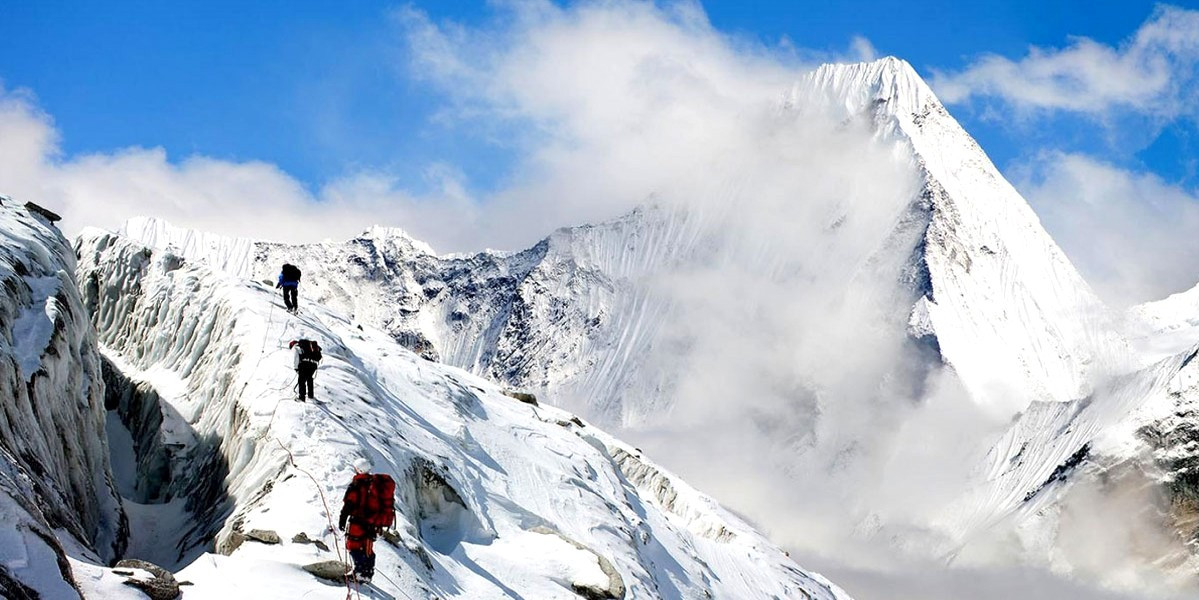

 .
.


